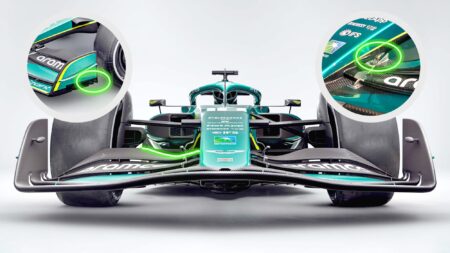
The crucial design details on Aston Martin’s 2022 F1 car — and the bits it’s hiding
Aston Martin’s AMR22 under the microscope: aerodynamicist Kyle Forster analysis the design details we can see, and the bits that are missing on the 2022 F1 car
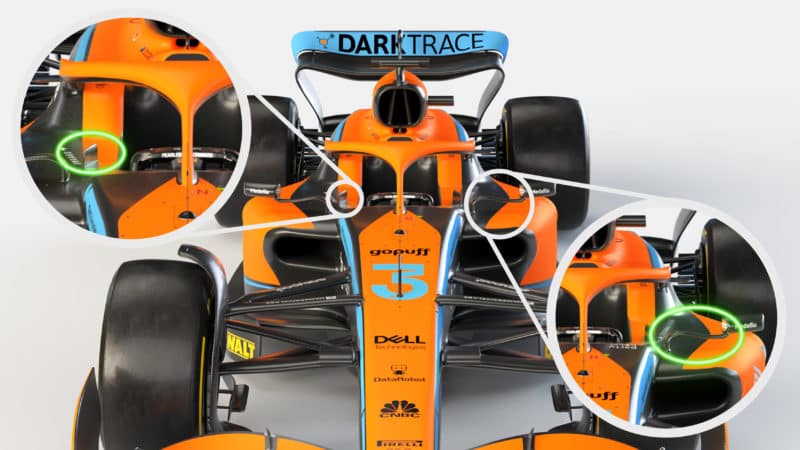
Kyle Forster worked as an aerodynamicist at Mercedes-AMG F1 from 2018-2020 and runs the JKF racing engineering consultancy.
When the covers come off a launch car, the first question to ask is what exactly are we looking at?
Compared to the Aston Martin, revealed a day before, the McLaren is really quite tame, and makes you wonder how early in the development process the car is from. However, it’s clearly not just a show car, so let’s analyse and treat it as a real launch.
It’s worth noting that it looks like the physical car in the livestream launch has some differences to the digitally-created images that McLaren has also released.
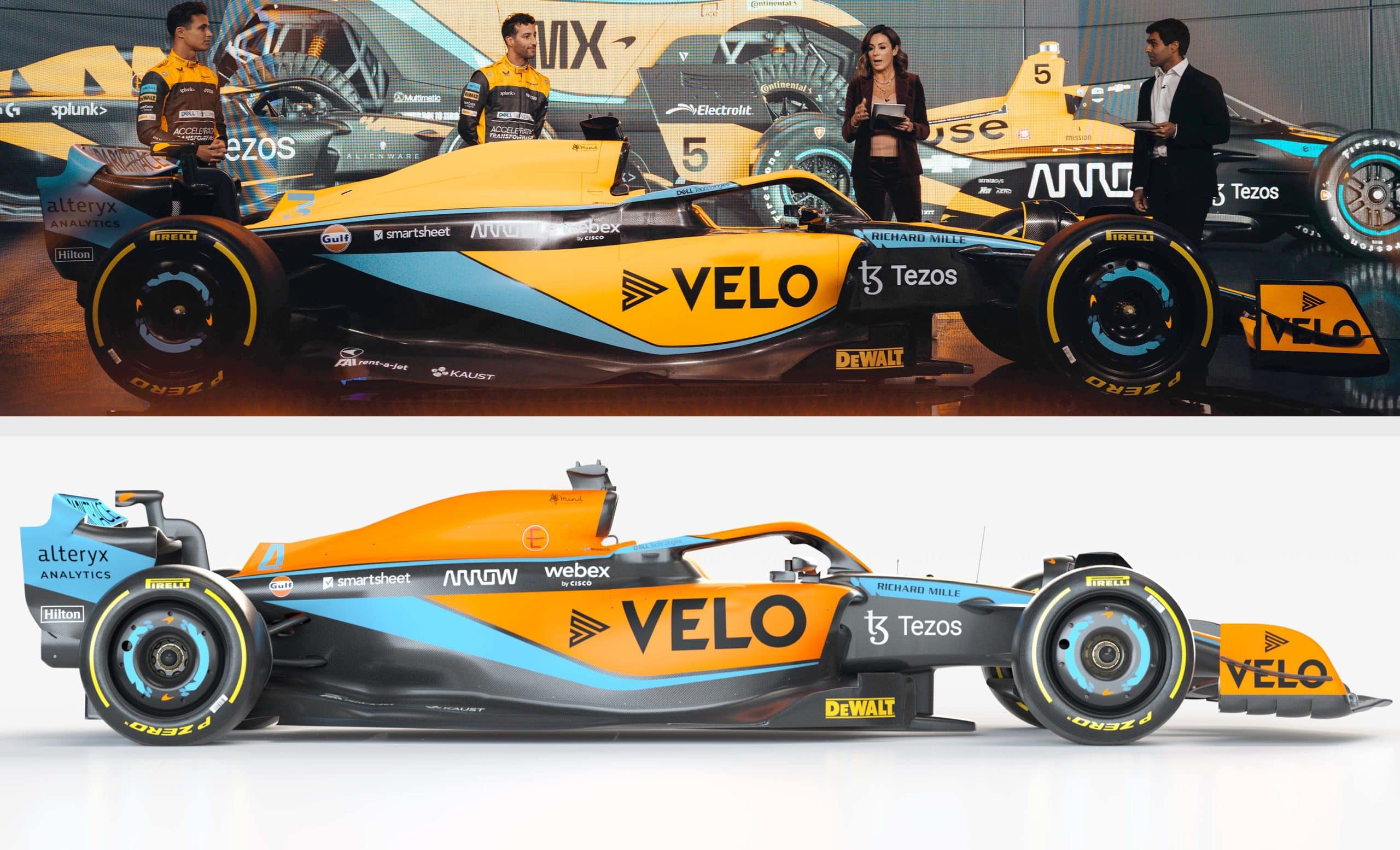
It appears to have a subtly different floor to the renders (bigger sharper floor curl, some form of geometry at the rear floor that looks a bit like a notch, maybe a cover, possibly a fancy curl), and they took great care to never show it fully from the front or the back.
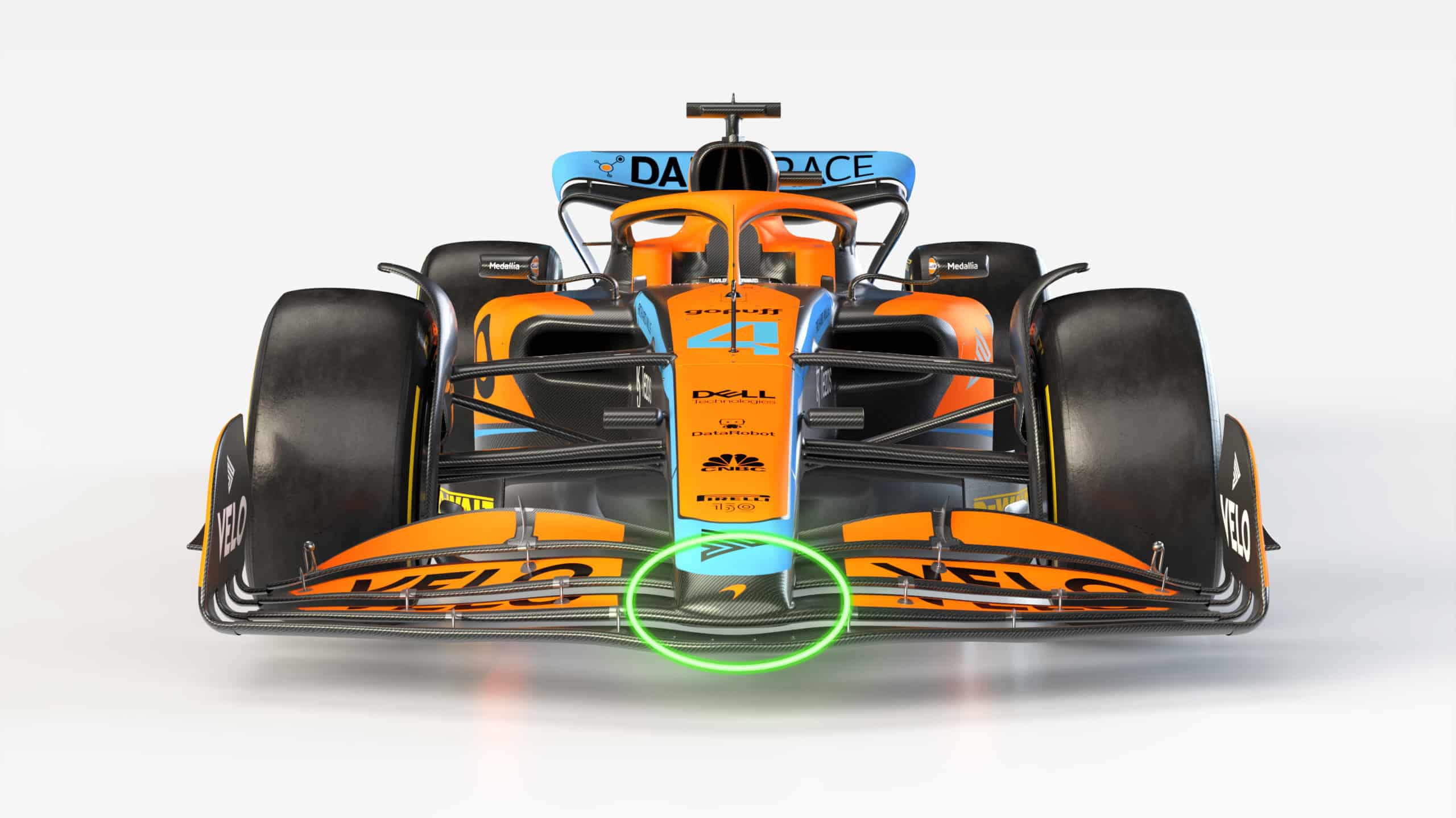
The front wing runs the same disconnected first element that we’ve seen on the other launch cars thus far. It wouldn’t surprise me at all if this becomes a common solution across the grid because it just seems a logical and clean way to manage the airflows that are sucked towards the low-pressure area under the nose, helping to maintain the flow quality.
The front wing centre is not as raised as we saw on the Aston Martin. The lower ground proximity of the wing in the centre and its more angled nature likely allows them to back off the more outboard portions of the front wing and maintain overall wing loading – more of which to come.
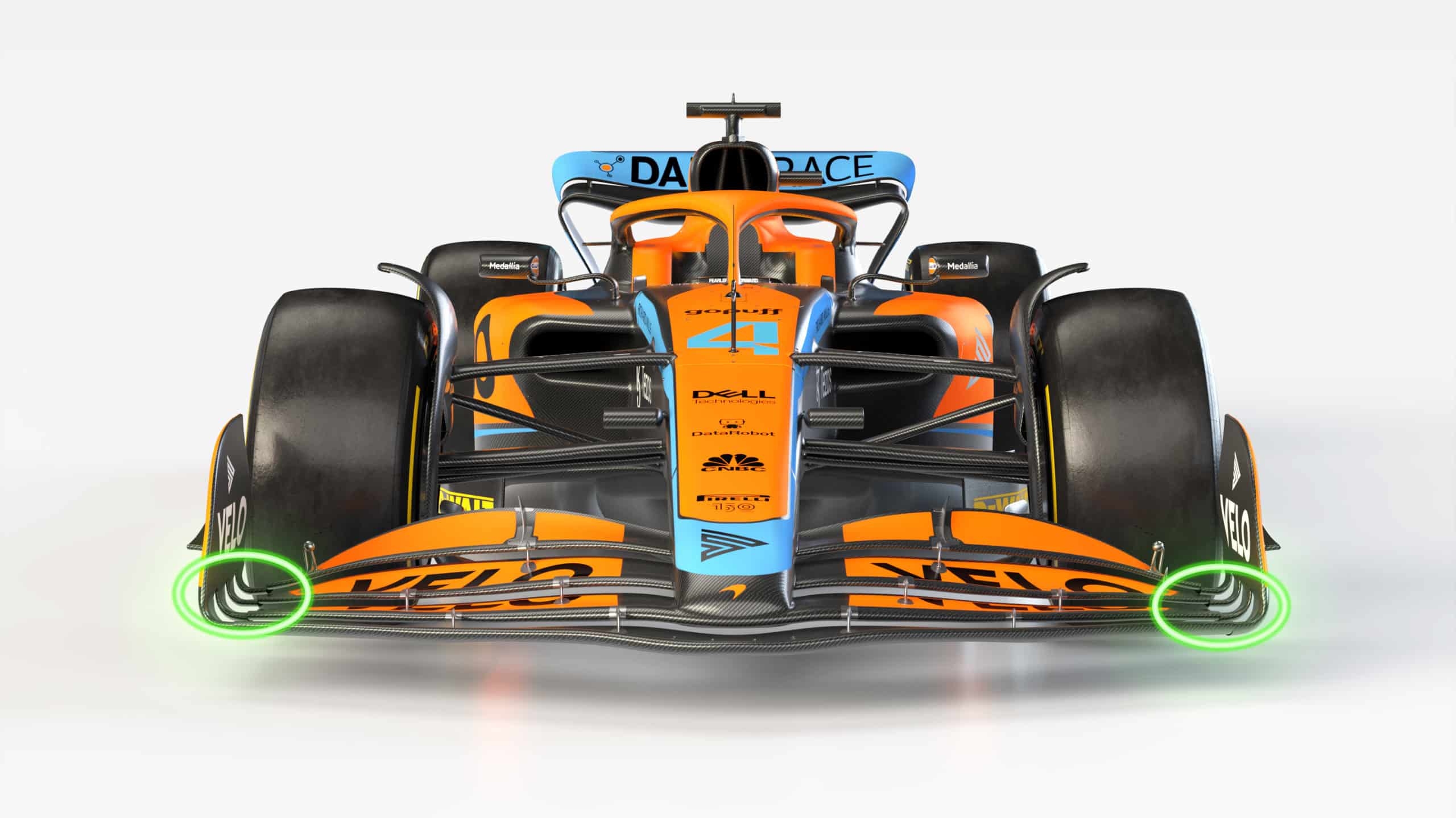
When analysing launch images, it’s useful to remember that most are digitally created, rather than the real thing or even a scale model, which can send us down the wrong path.
This image is a prime example: there’s a discontinuity in the front wing at the outboard, but I think someone may have just misaligned it in the render, otherwise it would not meet the regulations.
The rear wheels are slightly out of place on the render left to right as well, so it wouldn’t surprise me if the front wing on these images has a positioning problem that isn’t true to life — for McLaren’s sake, I hope so.
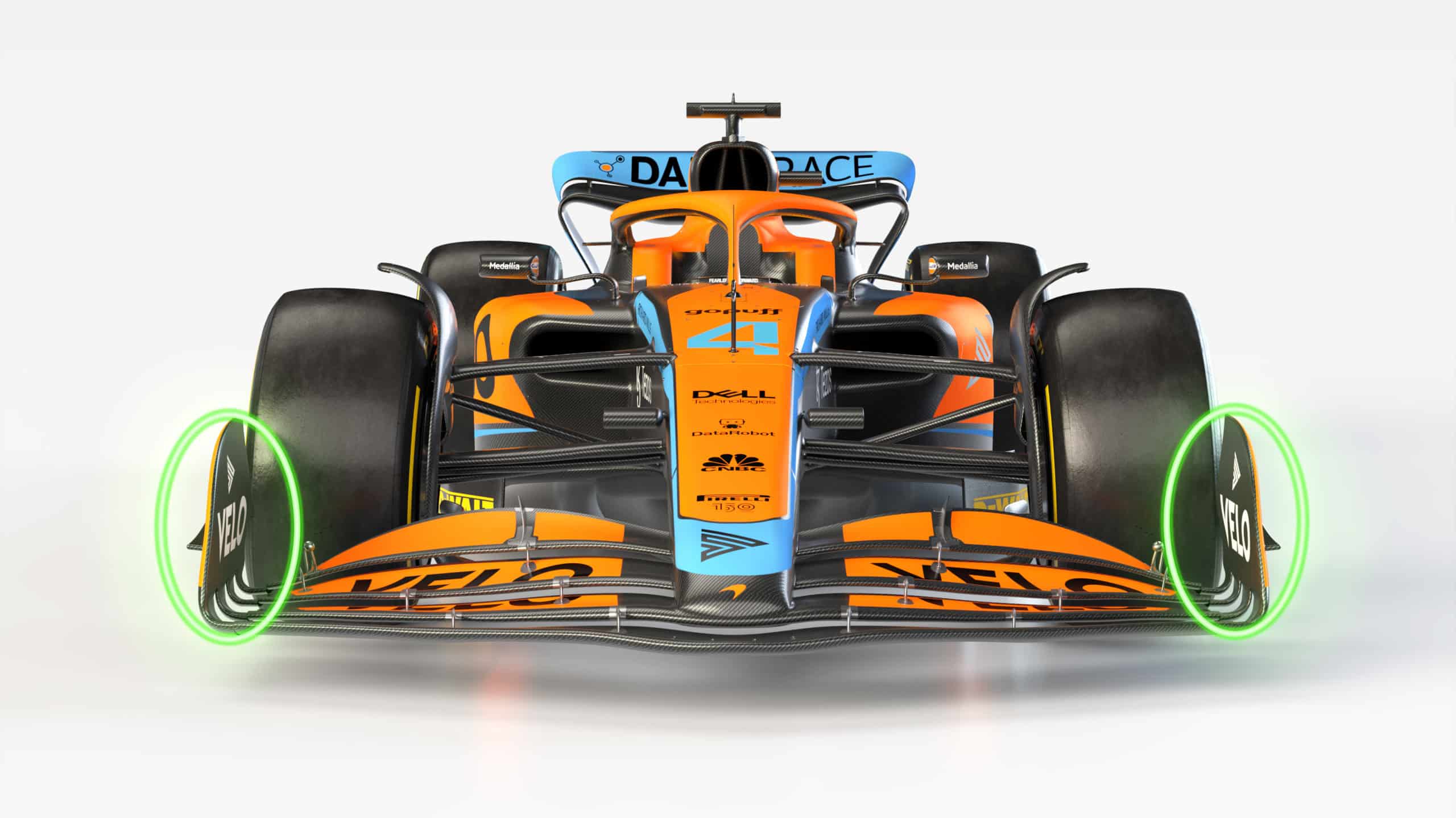
The front wing endplate curves in slightly in the mid portion, particularly notable at the trailing edge. McLaren could be using this to buy a bit more span and effectiveness for the dive plane they’re allowed on the outside of the endplate.
In addition to this the trailing edge looks like it’s tucked in more than the leading edge mid-height, indicating that this region is cranked a little harder. This could be forcing more upwash, sending airflow up towards the rearwards top tip of the endplate, as well as promoting downwash in the lower rearward sections of the endplate.
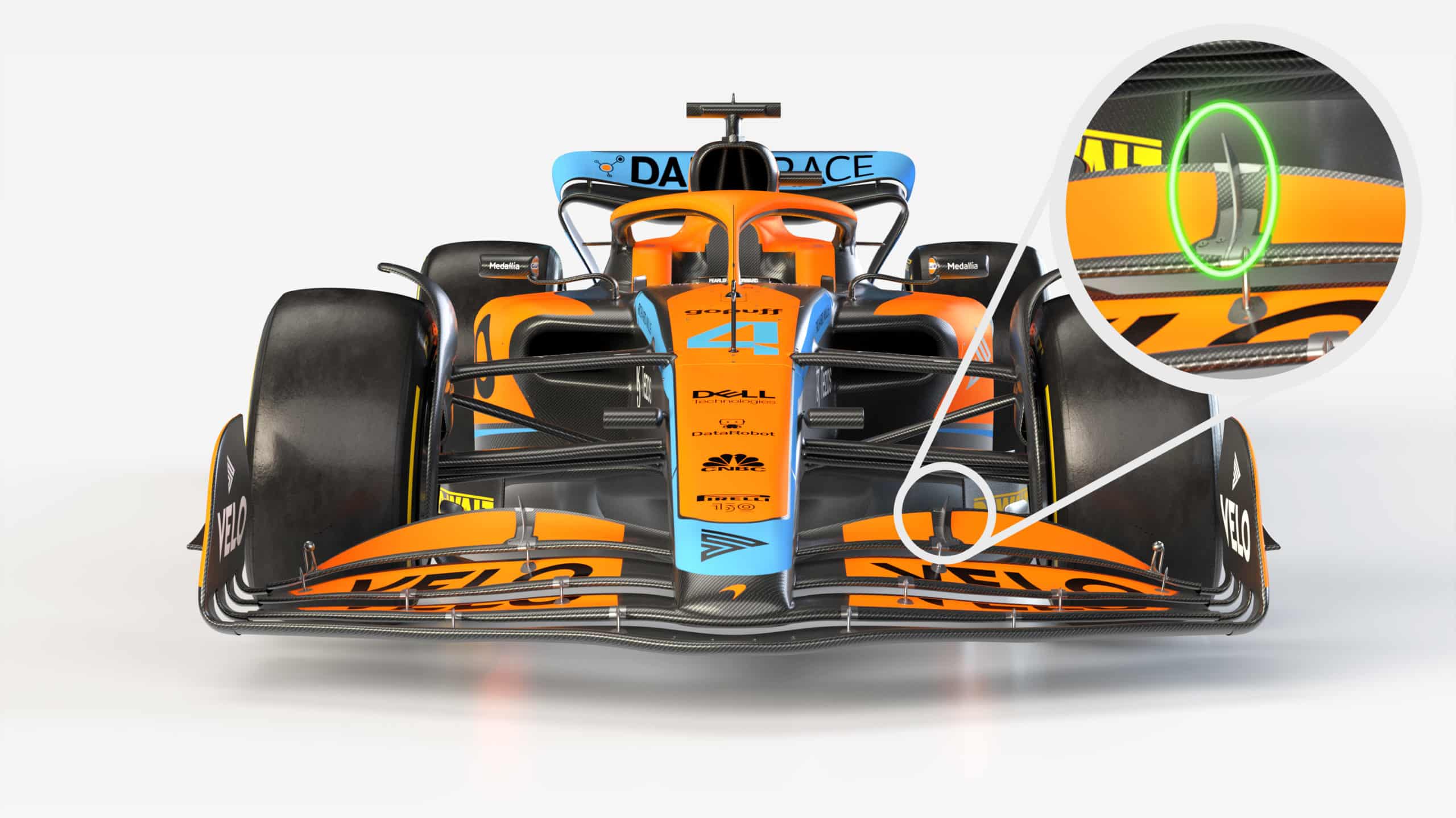
The vortex-generating flap hinge bracket is moved substantially outboards compared to the Aston. This vortex generator seems like it’s becoming a very standard feature up and down the grid, in the absence of strakes and the Y250 shedding edge under the new regulations.
It is likely defining the cast-off point for any vorticity that the front wing is building up. With the rules prohibiting discontinuities elsewhere, this may be the best shot the teams have got for controlling vorticity on the front wing in order to manage rearward airflow.
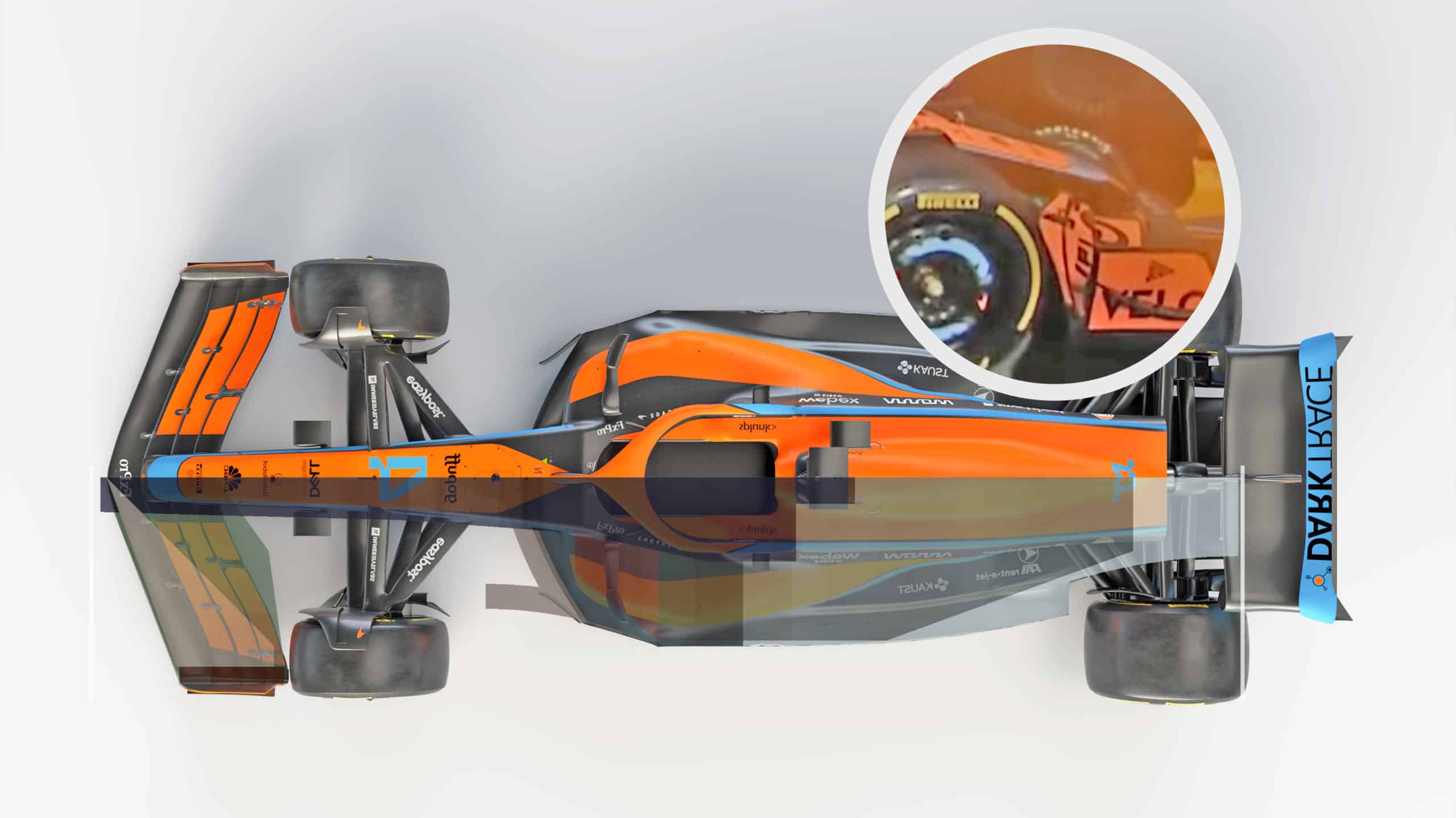
This is the first 2022 challenger to have a front wing that doesn’t fill all of the space that it legally can, with plenty of space behind the rear element in planform view.
It ties in to the more cranked wing centre than the Aston, as it indicates McLaren may have recovered the wing load lost by not using the full planform.
Another possible explanation is ride height setup. Some people may have noticed that in the Aston testing videos, the car is running very flat. This was not wholly unexpected, due to the lack of a step plane this year, which raised the outer edges of the floor previously.
So the outboard portions of the floor are low, with large height tunnels, so running the car flat and low maximises the ‘skirt’ effect of the floor outer edges. Running this flat puts the front wing very high, thus reducing its power. However, some teams may still elect to run with a little bit of rake, McLaren may be doing this, and that would help power the front wing up a bit more and allow them to reduce the planform.
Or alternatively, this is a bit of misdirection from them with the render, and the real wing fills the box, which is more what it looks like on the livestream.
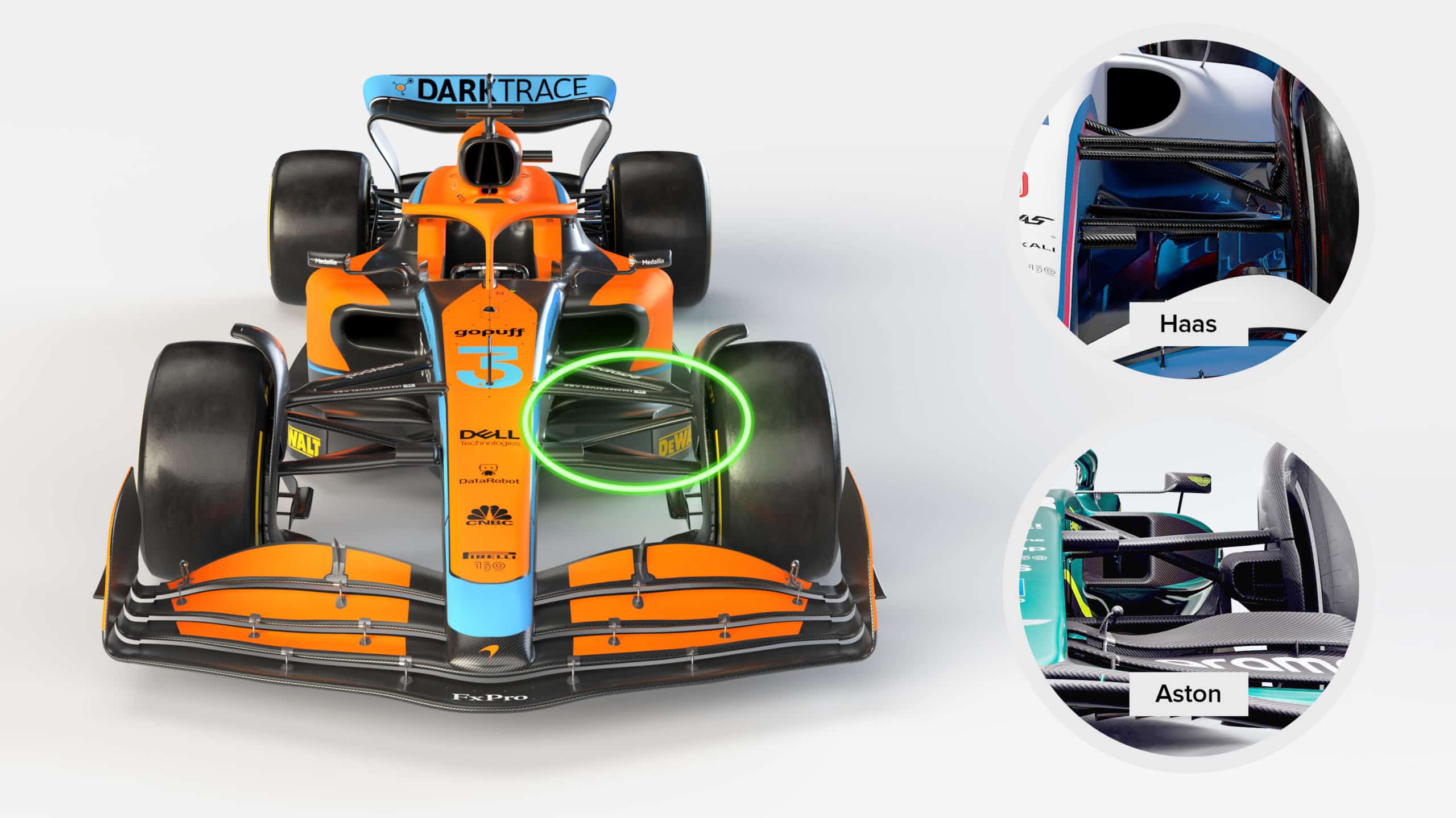
Front pullrod suspension was introduced for this year: the diagonal strut runs from the upper wishbones at the wheel to a lower point on the chassis, so the strut is pulled when the wheel runs over a ridge.
It does seem like the pullrod is slightly less horizontal than when this was tried by Ferrari on older regulations, perhaps courtesy of the larger diameter wheel drum from the bigger rims and consequently bigger uprights.
In terms of aero I’m not sure we are talking huge numbers here, they may be using the pullrod to downwash a little (this could also be done with a pushrod), [is this along the whole strut, and what would the benefit be?] and might be preferencing getting the downwash and resultant pressurisation low on the inboard side (this works better on a pullrod than a pushrod, as the inboard end is low).
Alternatively they could be trying to keep the cake tin face clean on the lower portion by moving the mount up and decoupling it a bit further from the lower wishbone mounting point, for higher-quality airflow.
It’s worth noting that the Aston and the Haas are still decoupling this a lot and keeping it all high, with the Aston running the pushrod directly into the scoop.
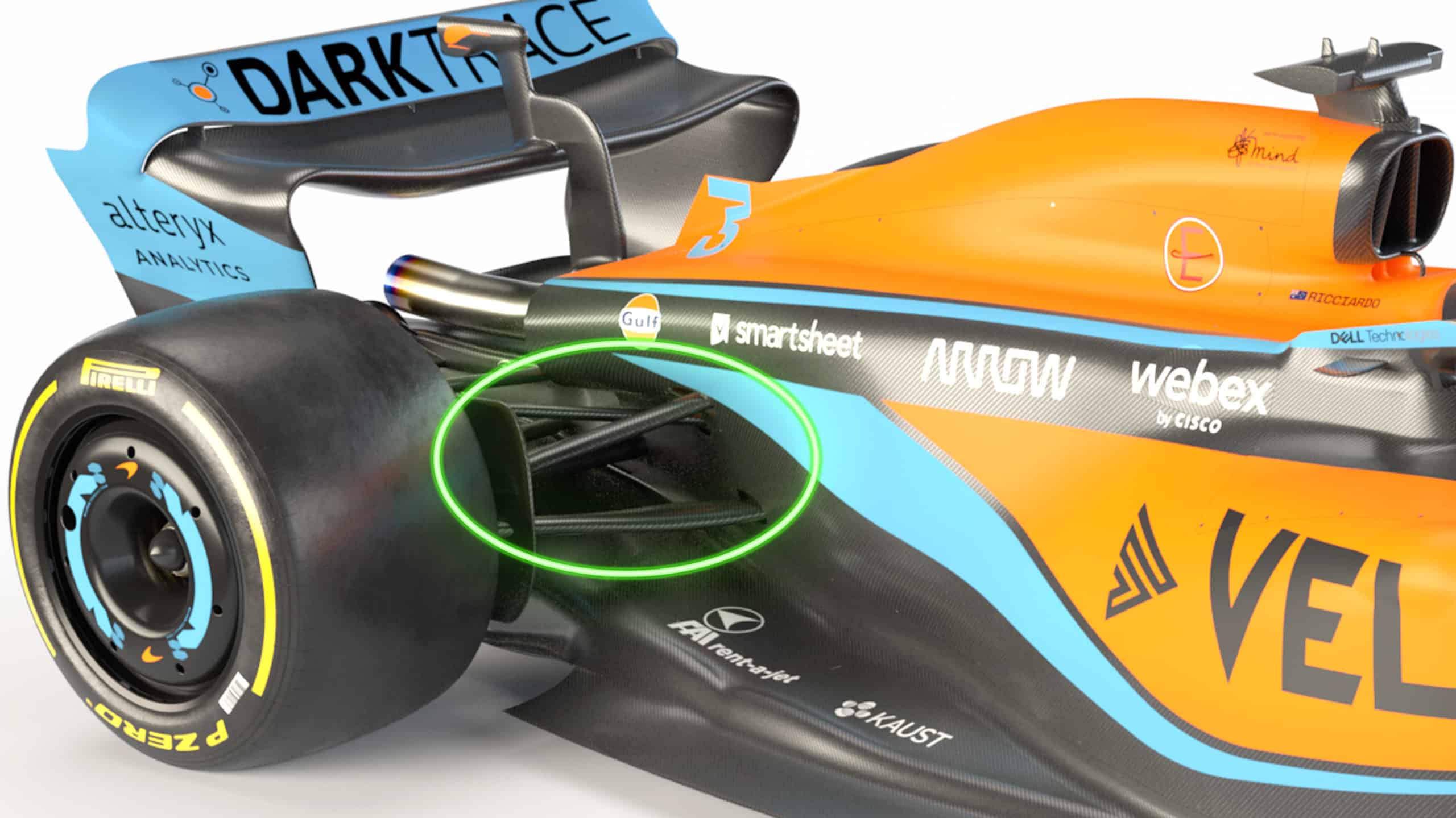
The change to pushrod on the rear makes sense to me, it seems that all the teams are really focusing on cleaning up the airflow coming to the top of the diffuser and beam wing, and the obvious way to do that is to move the suspension member up and out of the way. Keep in mind that the distance from the roof of the diffuser to the bottom of the floor is larger than it has been in previous years, courtesy of the tunnels.
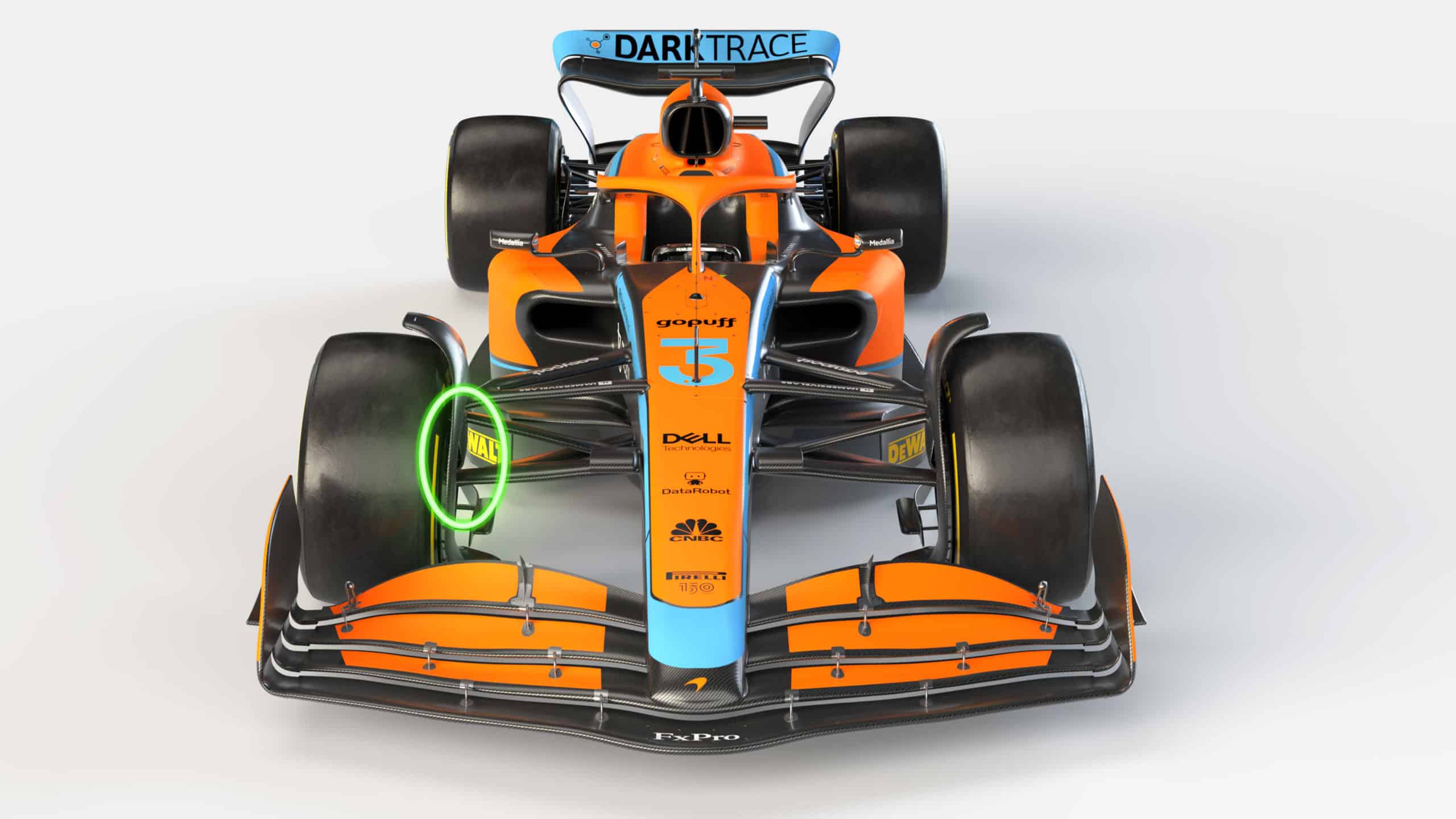
The front brake scoops are very small, much closer to the Haas than the Aston. This potentially supports the theory discussed in the last article that Aston is using an oversize scoop to flow bypass air through the wheel drum and then out the back for rear tyre wake control.
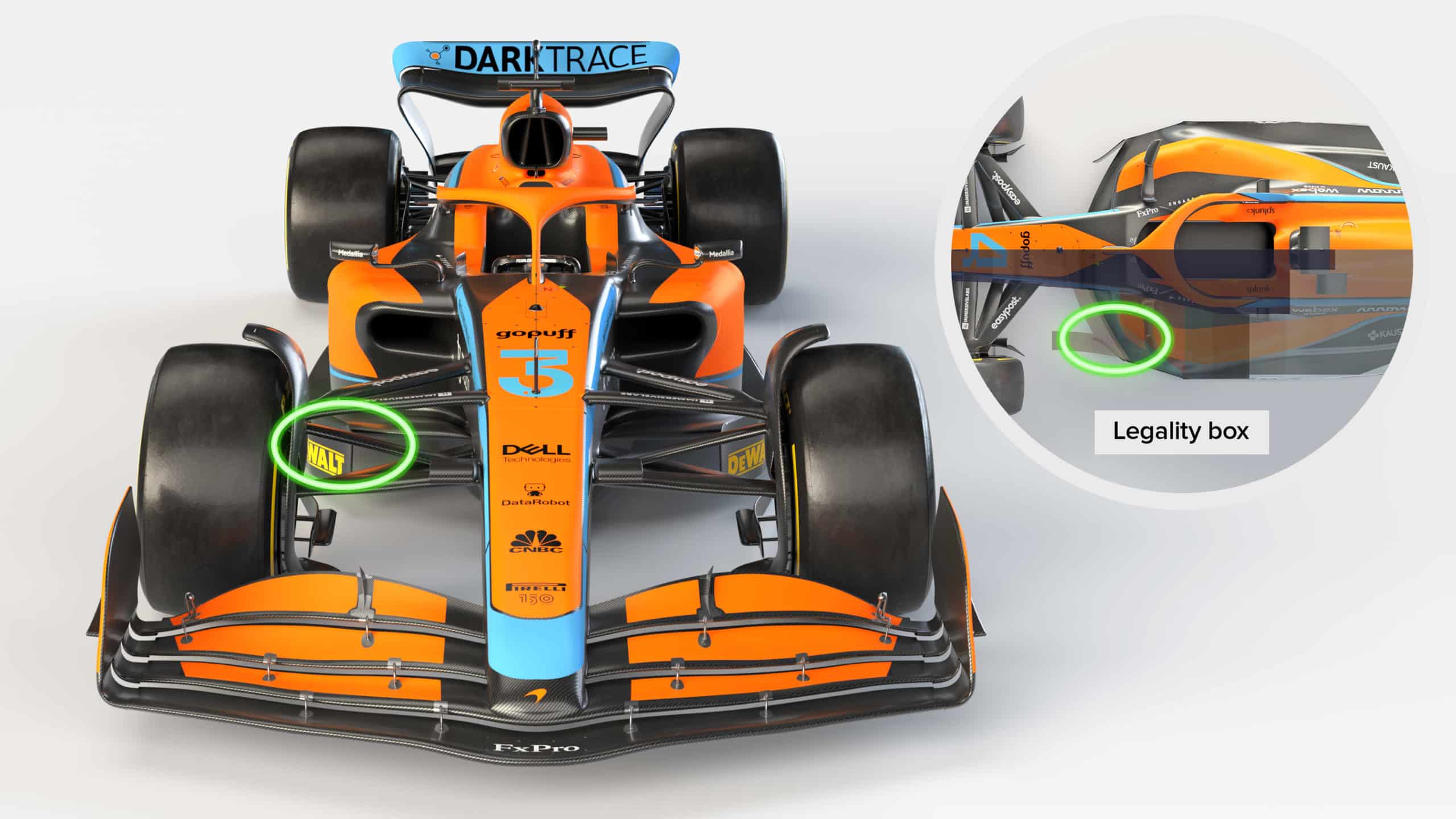
As with Aston Martin, McLaren looks to be using the outer of the four strakes it’s allowed ahead of the sidepods to replicate the bargeboard. It’s shorter than Aston’s design but angled sharply in once it passes the floor edge.
This is likely an alternative way of controlling the lower wheel wake, it should build up a decent amount of pressure and outwash. This is a different way of using the legality box compared to the Aston, where instead of extending the whole way forwards into the narrow sliver of box that exists on the outboard, you instead move sideways along the wider portion of the strake box.
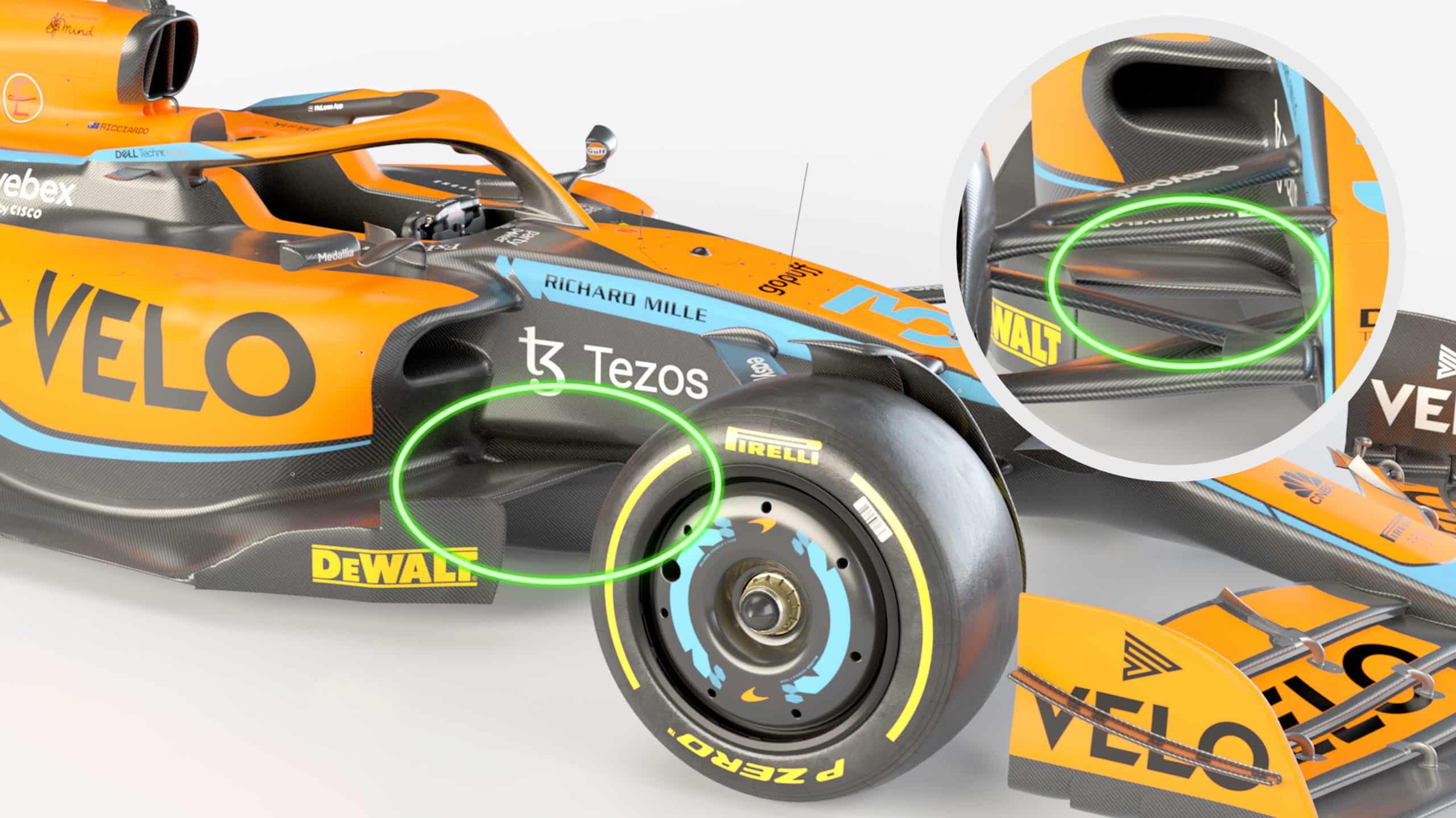
The strakes are missing from the renders, and it seems deliberately not shown well in the live coverage. It is worth noting that historically McLaren has removed diffuser strakes in its launch renders.
There is an extremely thin floor leading edge inboard compared to the other designs that we’ve seen in this region. Perhaps they are doing something fancy with this and the strakes and that’s why they are hiding them. The edge is far thinner than the Aston.
With such a thin and comparatively sharp leading edge it could be quite tricky to get the alignment on this to the flow right, and this shape has probably had reasonable effort put into it to make sure it is compliant across various car conditions, such as different ride heights and corner radii.
The shape of it with the relatively flat top and larger radius curved bottom implies that they are getting a reasonable amount of downwash onto this surface. Going thinner in this area would likely have the added benefit of a slight local drag reduction.
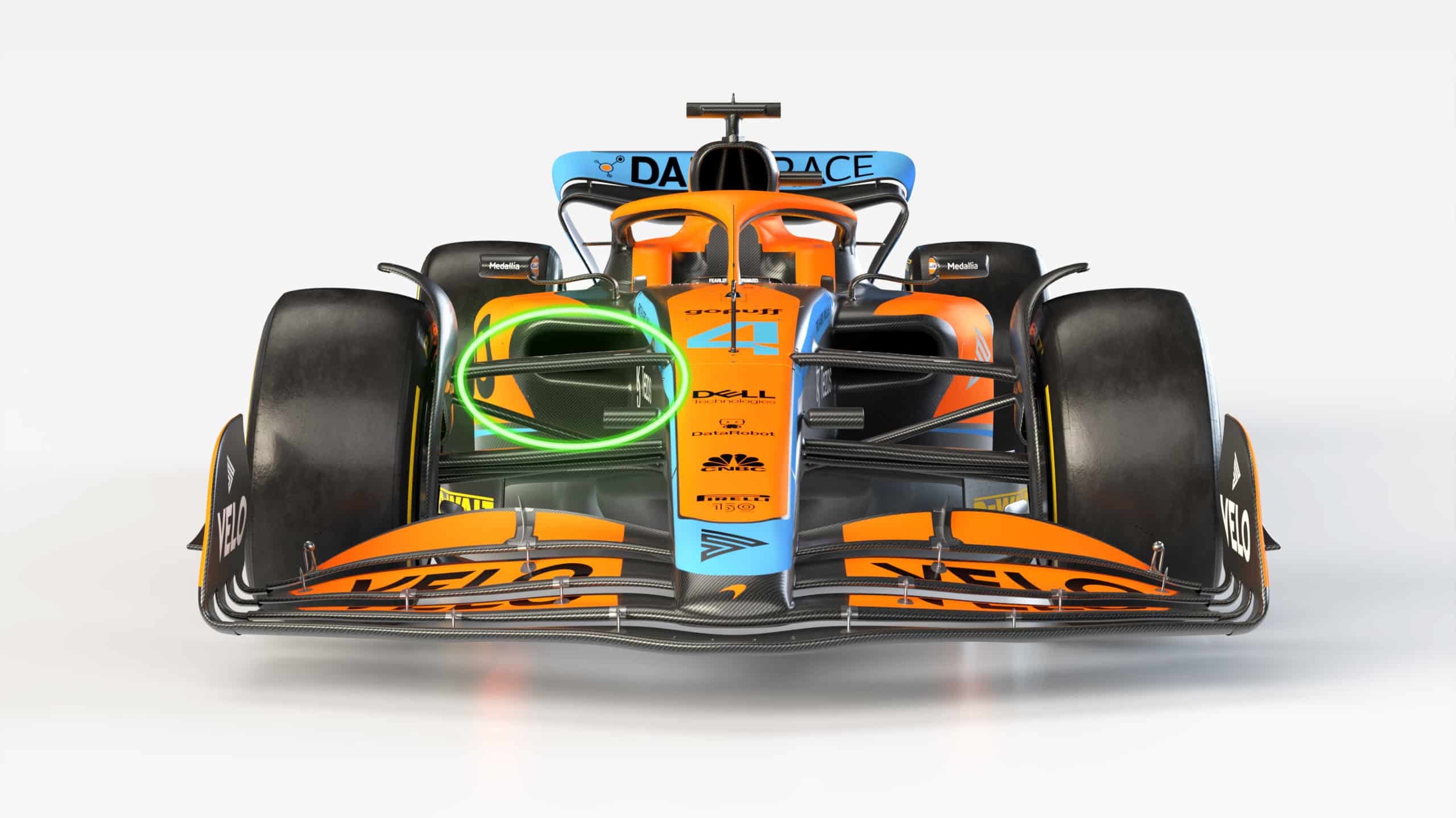
The car has quite a bluff front sidepod and wide undercut. They may be trying to get a higher pressure in front of the sidepod lower down. This is not dissimilar to the lower undercut geometry on the Haas.
McLaren may be relying on this sidepod pressurisation to manage the mid-wake turbulent air from the wheels then using the sharply angled-in bargeboard/outboard fence to control the lower wake aggressively. This is a very different strategy to the Aston.
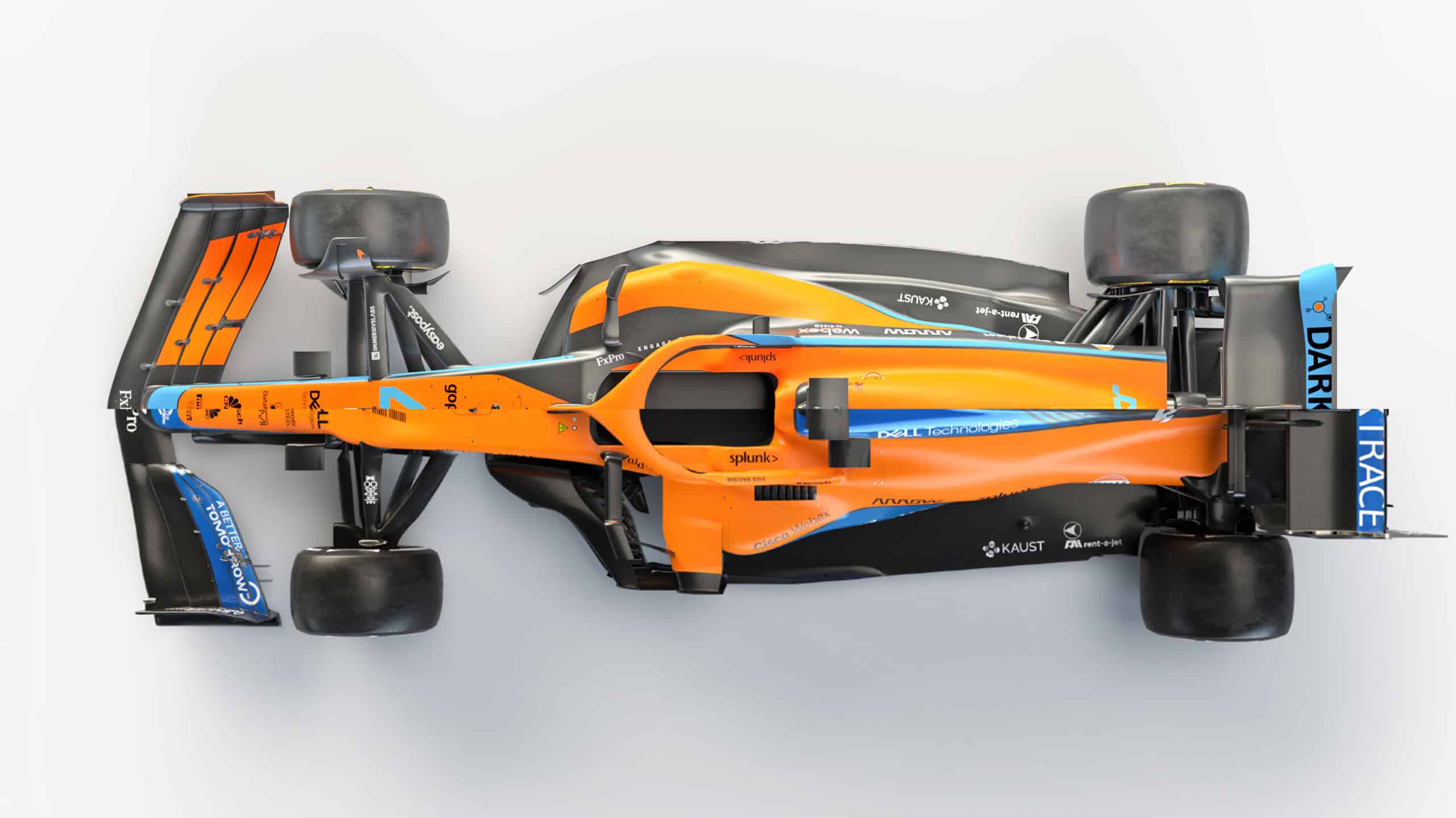
The overall cooling strategy isn’t hugely different to McLaren’s previous car. The sidepod is fatter at the front, in a similar trend to what we’ve seen from other teams, but that’s likely for flow and wake management.
The cooling exit is biased high, but again not radically different to previous years (perhaps a little bit higher), and the width is similar. McLaren was particularly secretive with the car’s rear end and we would need to see more to determine whether or not the lower section comes in tight to a tight trailing edge at the bottom. All of this is still in line with the philosophy we’ve seen all the teams running of getting good, high quality air to the beam wing and diffuser exit devices.
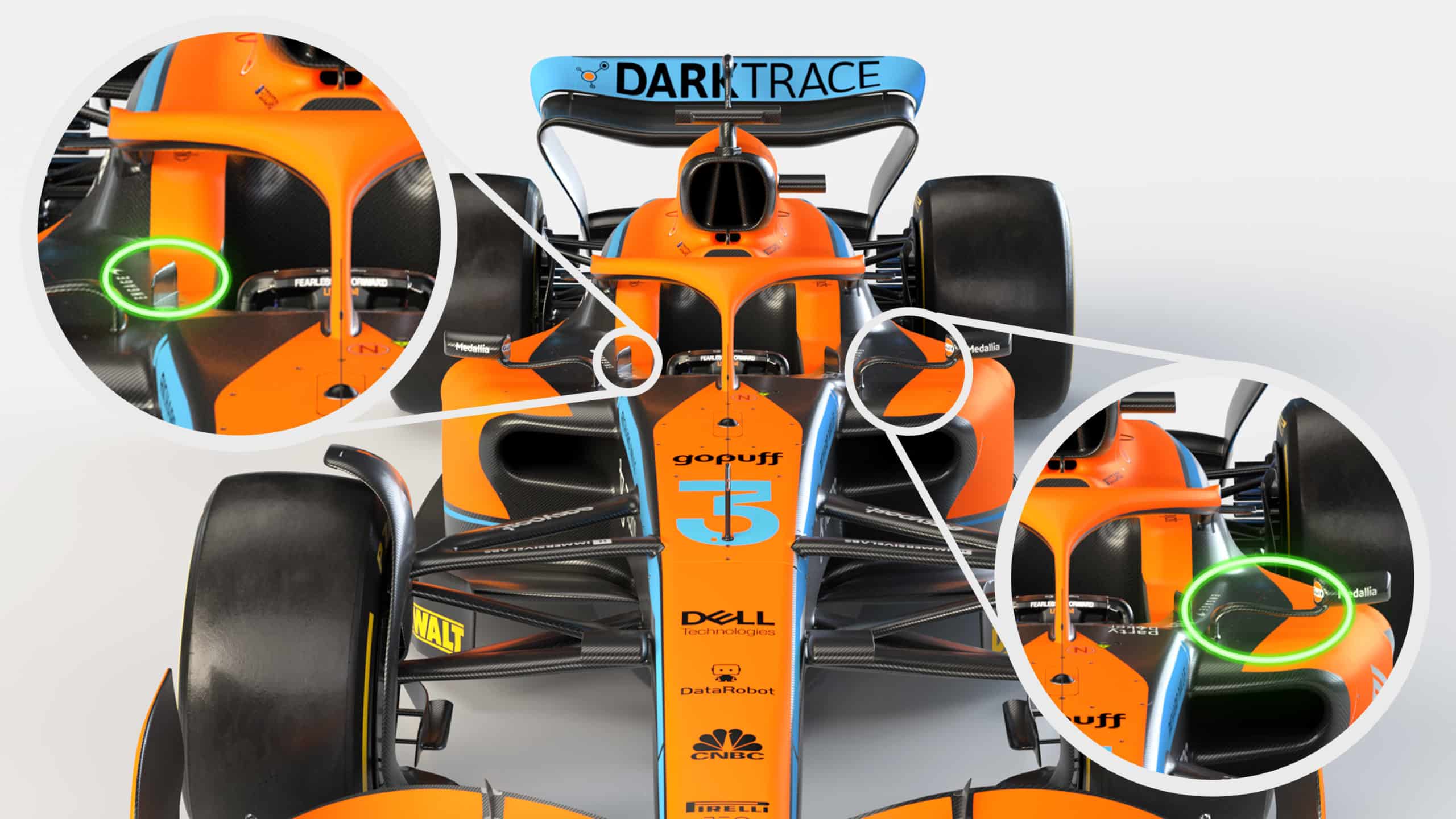
Some minor cockpit detailing: the mirrors are stayless, without a second support that both the Aston and Haas use.
There are winglets at the front on either side of the cockpit opening. Judging by their angle and location, I would have to assume their intent is to create inwashing vortices to help suppress the cockpit losses from spilling out.
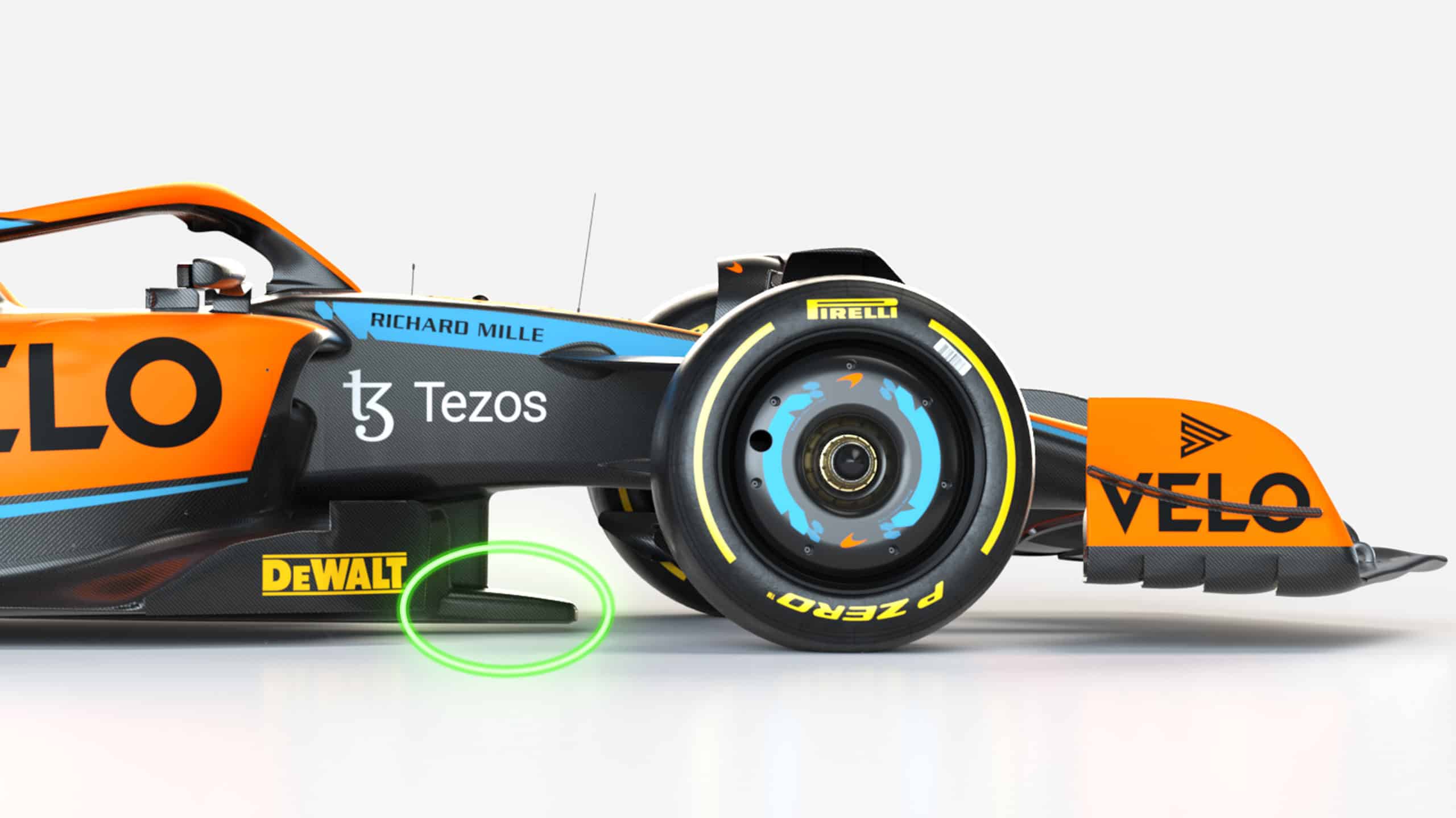
The bib is conventional, without any additional shedding edges. It has quite a lot of sectional depth to it, not really tapering down to a thin shedding edge like we’ve seen on bib designs of the past. Perhaps this is an effort to shift the bib vortices that travel underneath the central floor a little more inboard?
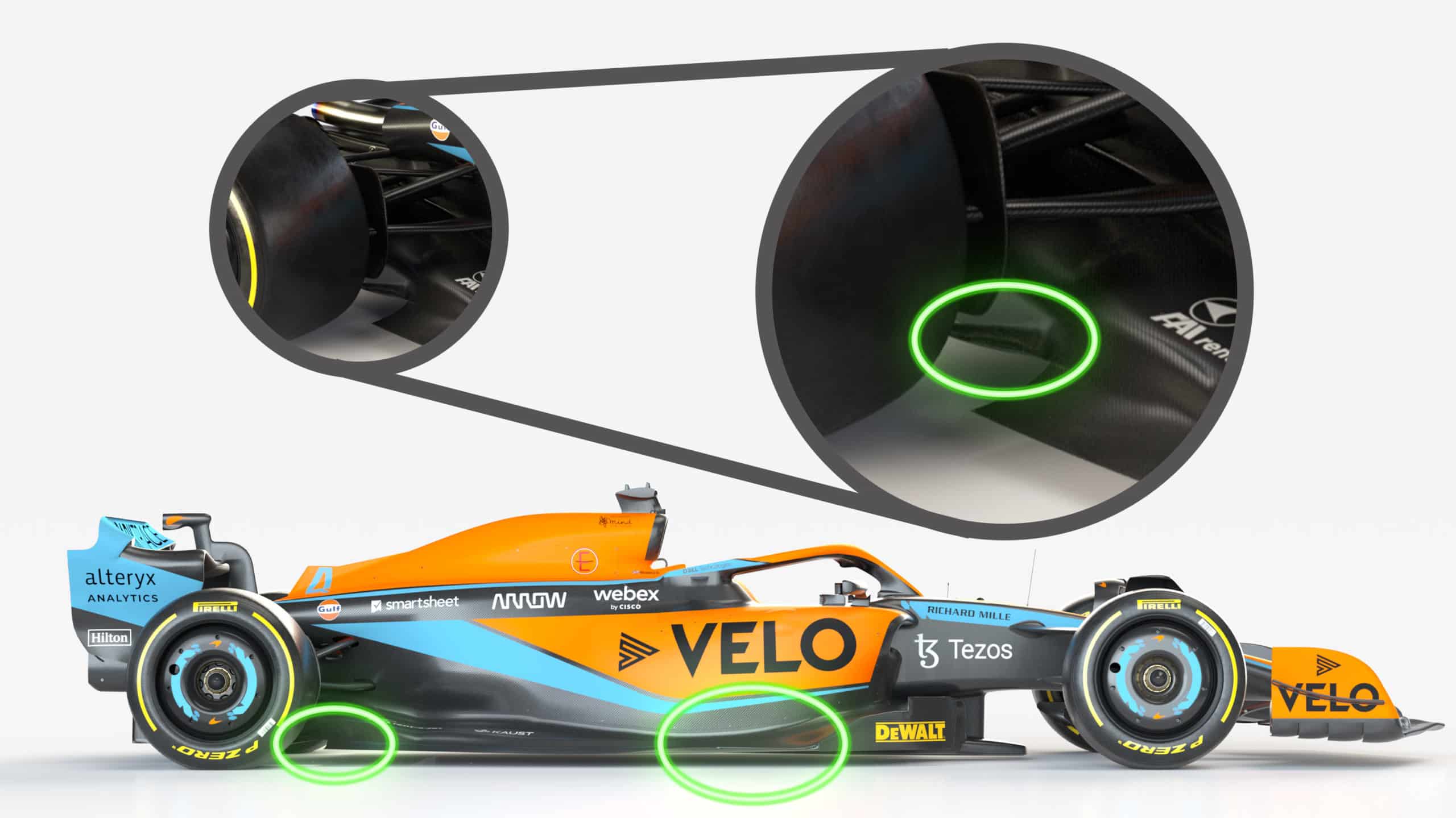
The forward floor curl is fairly subtle and smooth but, as mentioned before, this does look a little more aggressive in the livestream
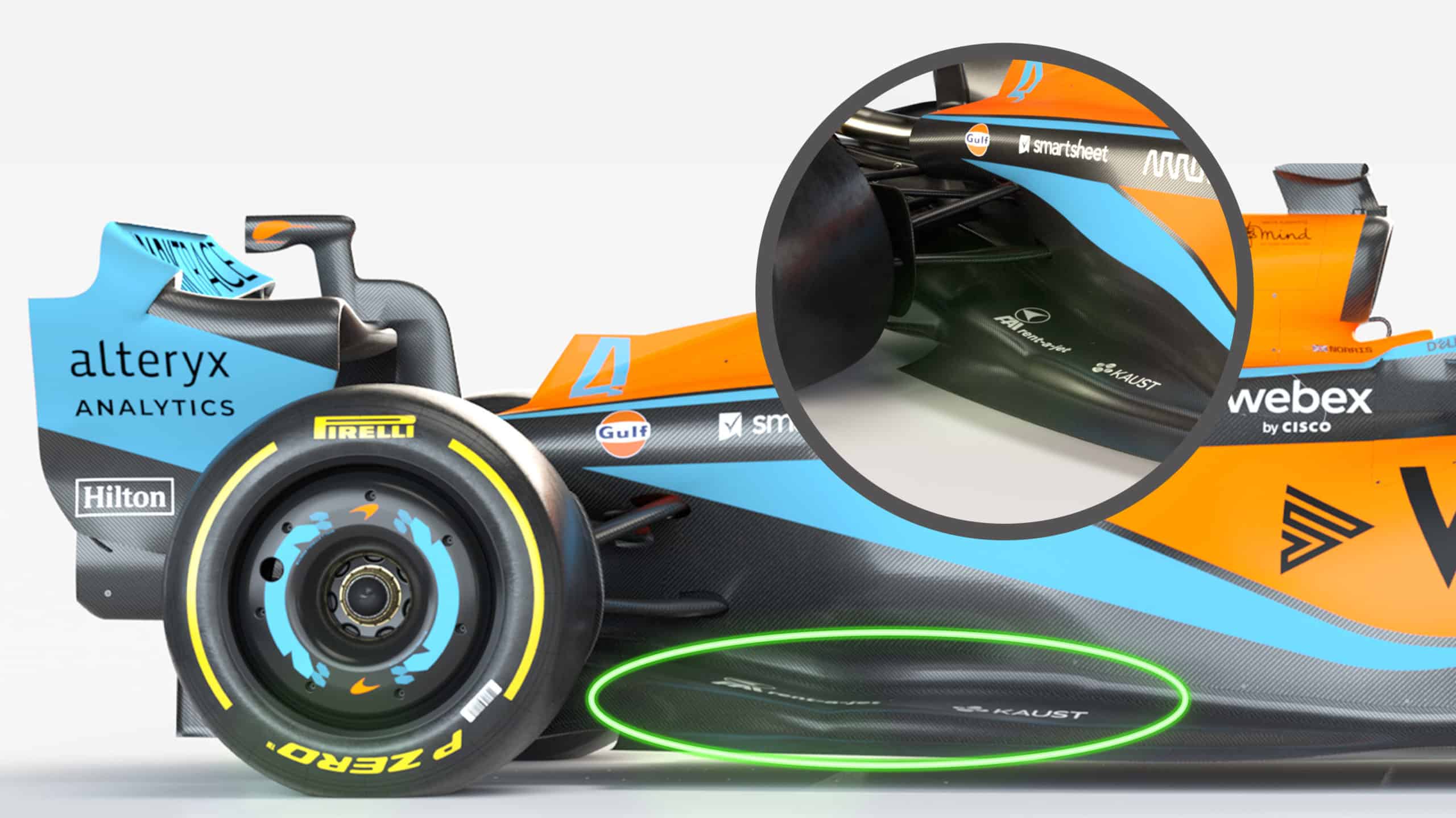
The diffuser sidewall has a notch at the front of it, not dissimilar to the Aston. However the strategy is a little different, with a more progressive ramp up from the flat floor edge and then what appears to be slightly less overall notch height.
The diffuser looks like it must be at or very close to legality judging by the kinked and wavy surfaces towards the rear. There does look like there’s a secondary kick, much like the Aston, however this one appears to be significantly more subtle.
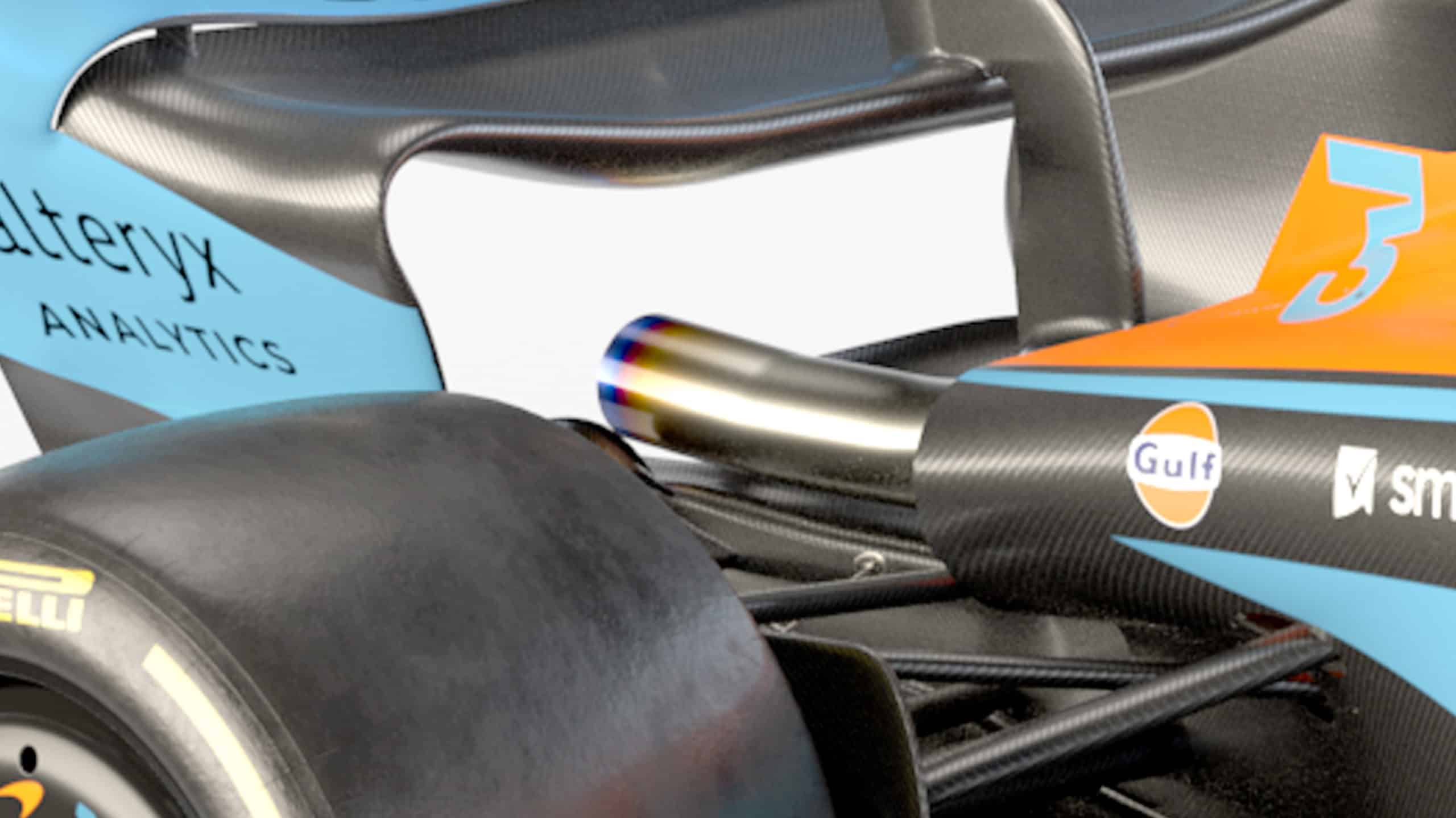
We have seen very little of the rear of the car, but the beam wing does appear to be two elements. There’s likely to be much more to talk about when we get a proper view.

Aston Martin’s AMR22 under the microscope: aerodynamicist Kyle Forster analysis the design details we can see, and the bits that are missing on the 2022 F1 car
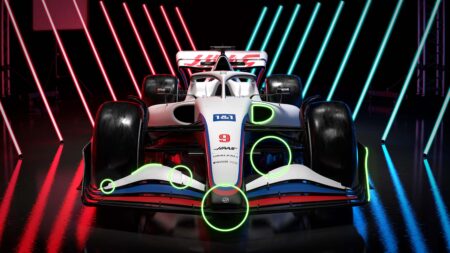
Kyle Forster worked as an aerodynamicist at Mercedes-AMG F1 from 2018-2020 and runs the JKF racing engineering consultancy. Trust me that nobody in the Formula 1 world could tell you…

With DRS gone and active aero and energy modes arriving, F1’s 2026 overhaul could make overtaking more unpredictable than ever

A regulation reset offers opportunity to everyone, but for several F1 teams, 2026 is less a fresh start than a moment of judgement

Behind F1's 2026 overhaul, there's a battle raging over sustainable fuel - a struggle of chemistry, economics and competitive secrecy

As Formula 1 resets for 2026, it’s a moment of reckoning for some drivers whose racing career has reached a crunch point